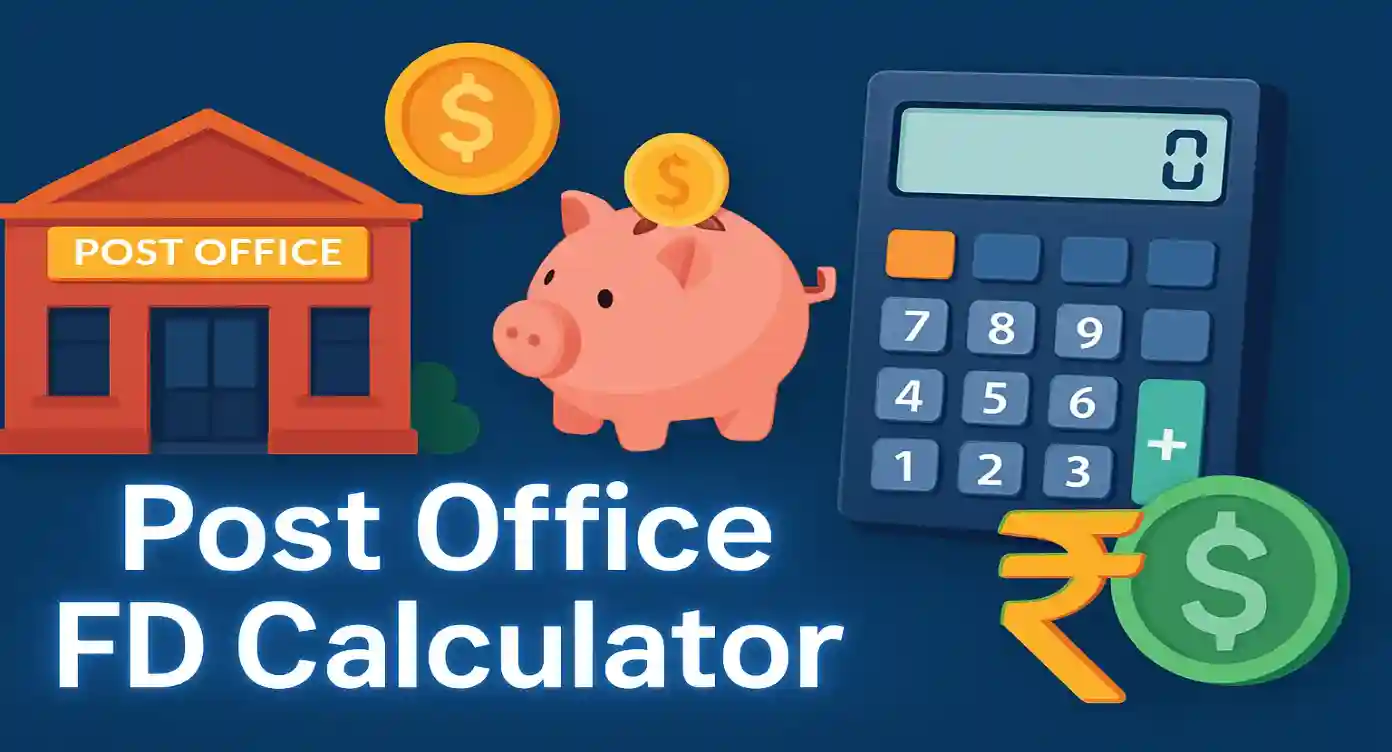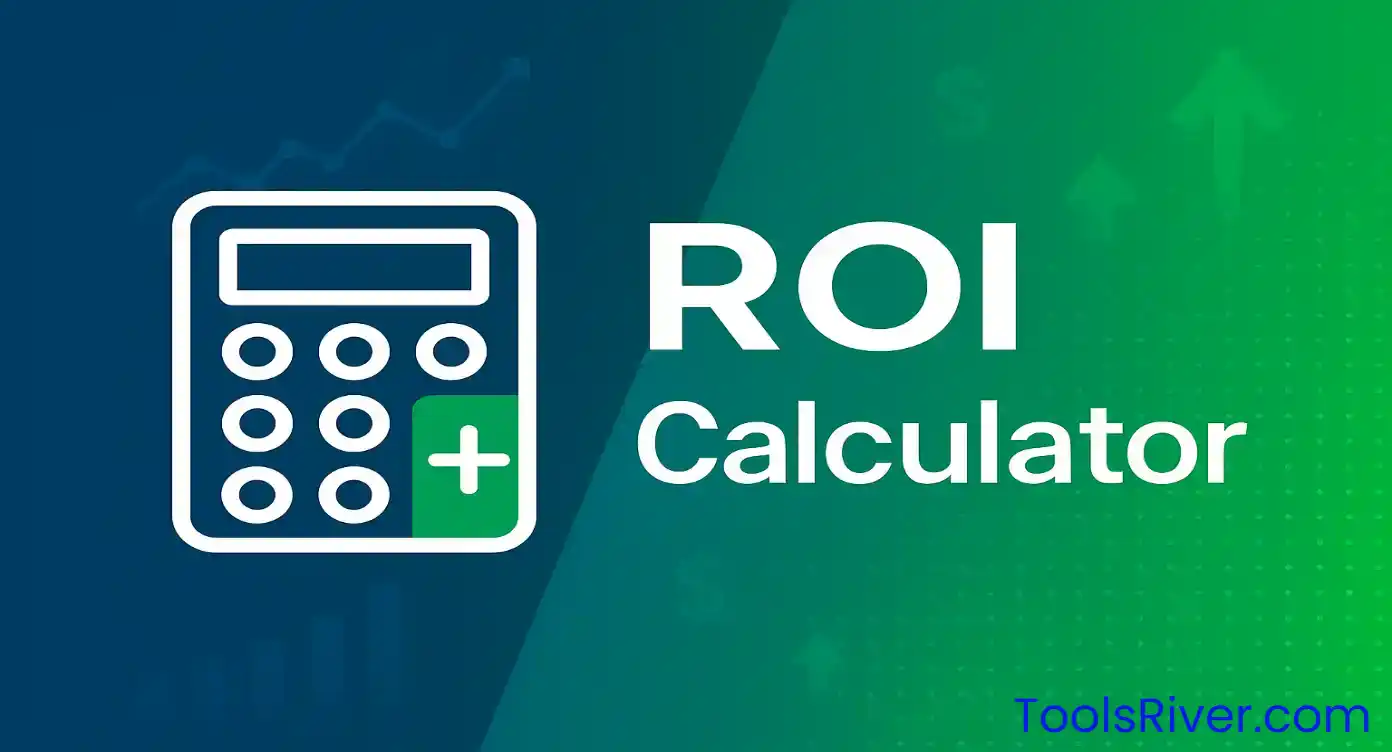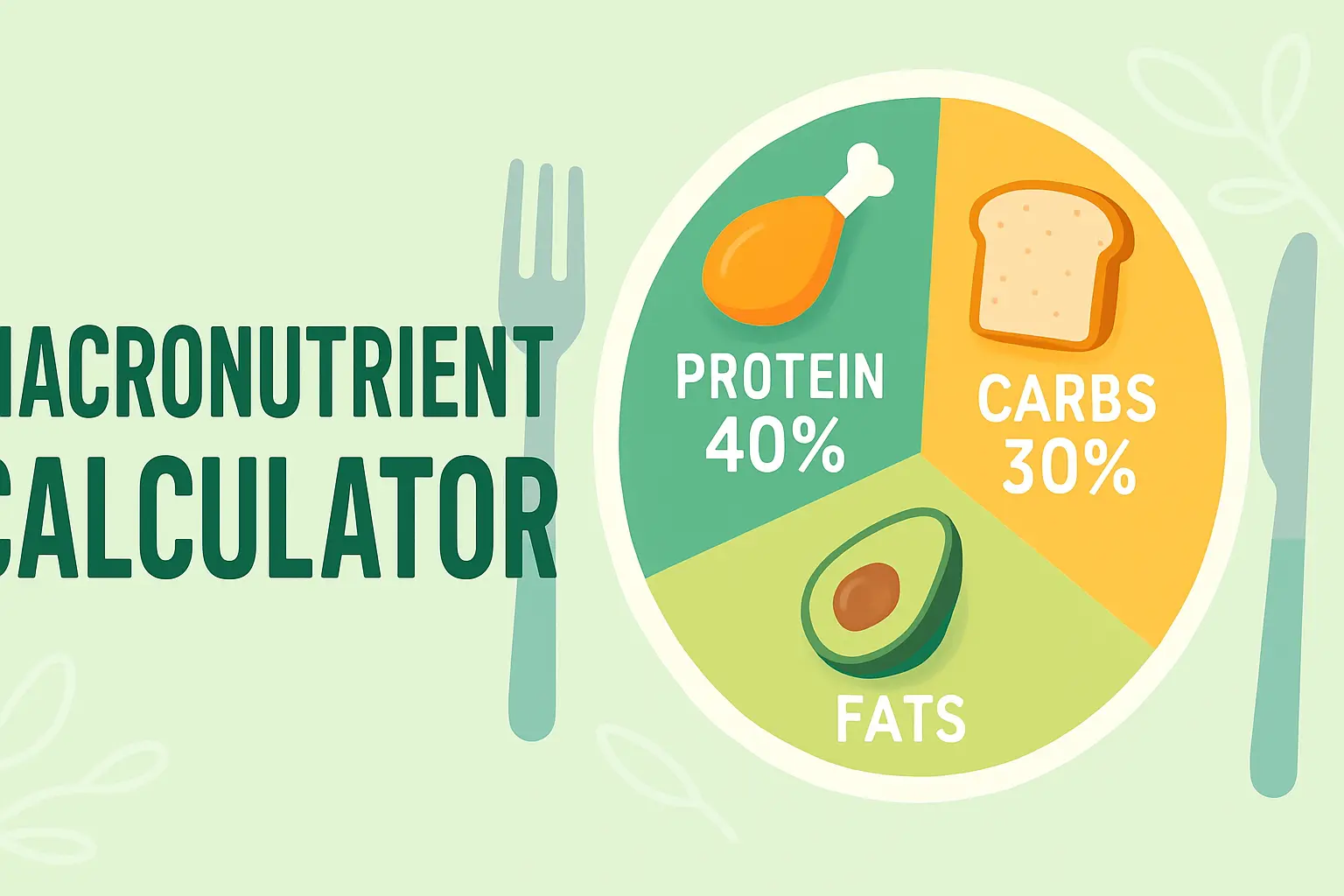Post Office FD Calculator
Calculate your Post Office Fixed Deposit maturity amount and interest earnings with our accurate calculator. Get instant results with current interest rates for all tenure options.
Calculate Your FD Returns
Minimum investment: ₹1,000
Current rates as per Post Office guidelines
Your FD Calculation Results
Enter your investment details and click calculate to see results
Investment Growth Visualization
Understanding Post Office Fixed Deposits
Post Office Fixed Deposit (FD) is one of the most trusted and secure investment options available in India, backed by the Government of India. This investment scheme offers guaranteed returns with minimal risk, making it an ideal choice for conservative investors seeking stable income generation.
Key Features at a Glance
- Government-backed security and guarantee
- Flexible tenure options from 1 to 5 years
- Competitive interest rates with quarterly compounding
- No maximum investment limit
Unlike traditional bank fixed deposits, Post Office FDs offer unique advantages including higher interest rates for certain tenures, government backing, and accessibility through the vast network of post offices across the country. The Post Office FD Calculator becomes an essential tool for potential investors to understand their returns before making investment decisions.
The scheme allows investors to deposit a lump sum amount for a predetermined period, earning fixed interest throughout the tenure. The interest can be paid annually or compounded quarterly, depending on the investor's preference and the specific terms of the deposit.
Current Interest Rates Structure
Regular Deposit Rates
Senior Citizen Benefits
Senior citizens (60+ years) enjoy the same attractive interest rates as regular depositors, making Post Office FD an excellent retirement planning tool.
Additional benefits may be available for senior citizens in certain schemes
The interest rates for Post Office Fixed Deposits are reviewed periodically by the Government of India and are typically higher than many bank FDs for comparable tenures. The 5-year tenure offers the highest interest rate of 7.50% per annum, making it the most attractive option for long-term investors.
Interest calculation follows the compound interest method with quarterly compounding, which means your investment grows faster compared to simple interest calculations. This compounding effect becomes more significant with longer tenure periods, which is why our Post Office FD Calculator shows higher returns for extended investment periods.
Calculation Methodology
Understanding how Post Office FD returns are calculated is crucial for making informed investment decisions. Our Post Office FD Calculator uses the standard compound interest formula to provide accurate results that match actual returns from post office deposits.
Compound Interest Formula
Maturity Amount = P × (1 + r/n)^(n×t)
Where:
- P = Principal amount (initial investment)
- r = Annual interest rate (in decimal)
- n = Number of times interest is compounded per year
- t = Time period in years
Step-by-Step Calculation Process
Step 1: Determine the Variables
Identify your principal amount, select the appropriate interest rate based on tenure, and determine the compounding frequency (quarterly for Post Office FDs).
Step 2: Apply the Formula
Substitute the values into the compound interest formula. For quarterly compounding, n=4, which means interest is calculated and added to the principal four times a year.
Step 3: Calculate Returns
The result gives you the maturity amount. The difference between this amount and your principal investment is your total interest earned.
Example Calculation
Let's calculate returns for ₹1,00,000 invested for 5 years at 7.50% interest rate:
Principal (P) = ₹1,00,000
Interest Rate (r) = 7.50% = 0.075
Compounding (n) = 4 (Quarterly)
Time (t) = 5 years
Maturity Amount = 1,00,000 × (1 + 0.075/4)^(4×5) = ₹1,45,424
Total Interest Earned = ₹45,424
Benefits of Post Office Fixed Deposits
Post Office Fixed Deposits offer numerous advantages that make them an attractive investment option for individuals seeking safe and reliable returns. Understanding these benefits helps investors make informed decisions about including Post Office FDs in their investment portfolio.
Safety and Security
- • Government of India backing ensures 100% safety
- • No risk of capital loss
- • Guaranteed returns as per declared rates
- • No market volatility impact
Attractive Returns
- • Competitive interest rates up to 7.50%
- • Quarterly compounding increases returns
- • Better rates than many bank FDs
- • Predictable income stream
Flexible Tenure Options
- • Choice of 1, 2, 3, or 5-year tenures
- • Match investment horizon with goals
- • Ladder strategy possible
- • Renewal options available
Accessibility
- • Wide network of post offices
- • Easy account opening process
- • Minimal documentation required
- • Rural and urban accessibility
Additional Investment Benefits
Beyond the core advantages, Post Office FDs offer several additional benefits that enhance their appeal. The loan facility against deposits provides liquidity during emergencies without breaking the investment. Premature withdrawal options, though with reduced interest rates, offer flexibility for changing financial circumstances.
The nomination facility ensures smooth transfer of funds to beneficiaries, making it an excellent estate planning tool. Additionally, the simple and transparent process, combined with regular updates on interest rates through our Post Office FD Calculator, helps investors stay informed about their investment performance.
Eligibility and Documentation
Post Office Fixed Deposits are accessible to a wide range of investors with minimal eligibility requirements. Understanding who can invest and what documents are needed ensures a smooth investment process.
Eligible Investors
- Individual Accounts: Any Indian citizen can open an individual account
- Joint Accounts: Up to 3 adults can open joint accounts
- Minor Accounts: Guardians can open accounts for minors
- Trust/Society: Registered organizations with proper documentation
Required Documents
- Identity Proof: Aadhaar Card, PAN Card, Passport, or Voter ID
- Address Proof: Utility bill, Aadhaar, or bank statement
- Photographs: Recent passport-size photographs
- Signature: Specimen signature on application form
Account Opening Process
Step 1: Visit Post Office
Visit the nearest post office with all required documents and decide on your investment amount using our Post Office FD Calculator beforehand.
Step 2: Fill Application
Complete the Time Deposit application form with accurate details including tenure, interest payment preference, and nomination details.
Step 3: Submit Documents
Submit the completed form along with required documents and make the initial deposit through cash, cheque, or demand draft.
Step 4: Receive Receipt
Collect your deposit receipt and keep it safe as it will be required for all future transactions and at maturity.
Important Note
Ensure all documents are self-attested and carry original documents for verification. For joint accounts, all holders must be present during account opening or provide proper authorization.
Tax Implications
Understanding the tax implications of Post Office Fixed Deposits is crucial for effective financial planning. The tax treatment affects your actual returns, making it important to consider these factors when using our Post Office FD Calculator for investment planning.
Tax on Interest Income
Taxable Income: Interest earned from Post Office FDs is fully taxable as per your income tax slab rates.
TDS Applicability: TDS is deducted at 10% if annual interest exceeds ₹40,000 (₹50,000 for senior citizens).
No Tax Exemption: Unlike some other post office schemes, FD interest doesn't qualify for Section 80C deductions.
TDS Thresholds
Tax Planning Tips
- • Spread investments across financial years
- • Consider joint accounts to utilize spouse's exemption
- • Plan withdrawals to optimize tax liability
- • Maintain proper documentation for ITR filing
Calculating Post-Tax Returns
When evaluating Post Office FD returns, it's essential to consider the after-tax impact. Our Post Office FD Calculator provides gross returns, but your actual returns will be lower after considering income tax. For example, if you're in the 30% tax bracket and earn ₹10,000 as interest, your post-tax return would be ₹7,000.
Tax Calculation Example
For a 5-year FD of ₹5,00,000 at 7.50% interest:
Annual Interest: ₹37,500 (below TDS threshold)
Tax Liability (30% bracket): ₹11,250
Post-tax Annual Interest: ₹26,250
Effective Interest Rate: 5.25%
For comprehensive tax planning, consider consulting with a tax advisor, especially for large investments. Also, explore our income tax calculator to better understand your tax implications across different investment scenarios.
Comparison with Bank Fixed Deposits
When choosing between Post Office FDs and bank fixed deposits, investors need to consider various factors beyond just interest rates. Our comprehensive comparison helps you make an informed decision based on your specific requirements and risk tolerance.
| Comparison Factor | Post Office FD | Bank FD |
|---|---|---|
| Safety & Security | Government Backing | DICGC Insurance (₹5 lakhs) |
| Interest Rates | 6.90% - 7.50% | 5.50% - 7.25% |
| Minimum Investment | ₹1,000 | ₹1,000 - ₹10,000 |
| Tenure Options | 1, 2, 3, 5 years | 7 days - 10 years |
| Premature Withdrawal | After 1 year with penalty | Usually allowed with penalty |
| Loan Facility | Available | Available |
| Online Banking | Limited | Full Access |
Detailed Analysis
Interest Rate Advantage: Post Office FDs typically offer higher interest rates, especially for longer tenures. The 7.50% rate for 5-year deposits is often better than most bank offerings, making our Post Office FD Calculator show more attractive returns.
Security Factor: Government backing provides unmatched security, eliminating concerns about institutional failure. This makes Post Office FDs ideal for risk-averse investors who prioritize capital preservation over high returns.
Accessibility Considerations: While banks offer superior digital banking facilities, post offices provide better rural penetration. However, limited online services can be a drawback for tech-savvy investors who prefer digital convenience.
Best Choice Recommendations
Choose Post Office FD if:
- • Safety is your top priority
- • You want higher interest rates
- • Long-term investment (3-5 years)
- • Limited need for digital banking
Choose Bank FD if:
- • You need online banking facilities
- • Flexible tenure requirements
- • Frequent transactions needed
- • Relationship banking benefits
Consider using both options in your portfolio diversification strategy. You might also want to explore our compound interest calculator to compare different investment scenarios and make the most informed decision for your financial goals.
Maturity and Withdrawal Process
Understanding the maturity and withdrawal process for Post Office Fixed Deposits ensures smooth access to your funds when needed. Whether at maturity or through premature withdrawal, knowing the procedures helps you plan better and avoid any complications.
Maturity Process
Automatic Maturity
Post Office FDs mature automatically on the completion date. The maturity amount, as calculated by our Post Office FD Calculator, becomes due for payment on the maturity date without any additional action required from the investor.
Maturity Notification
Post offices typically send maturity notifications 30-60 days before the due date. However, it's advisable to maintain your own records and track maturity dates to ensure timely collection of funds.
Claiming Maturity Amount
Visit the post office with your original deposit receipt, identity proof, and completed withdrawal form. For joint accounts, signatures of all holders or proper authorization is required.
Required Documents for Withdrawal
- Original deposit receipt
- Valid identity proof
- Completed withdrawal form
- Joint holder signatures (if applicable)
- Cancelled cheque (for bank transfer)
- Nomination details (if required)
Premature Withdrawal
Premature withdrawal from Post Office FDs is allowed after completion of one year from the deposit date. However, this comes with penalties that reduce your overall returns compared to what our Post Office FD Calculator shows for full tenure.
Premature Withdrawal Penalties
Renewal Options
At maturity, you have several options for your funds. You can withdraw the entire amount, renew the deposit for another term, or partially withdraw and renew the remaining amount. Renewal can be done for the same or different tenure based on your current financial goals.
Pro Tip
Plan your renewal strategy using our Post Office FD Calculator to compare returns across different tenures. Consider market interest rate trends and your liquidity needs before deciding on renewal terms.
Investment Tips and Strategies
Maximizing returns from Post Office Fixed Deposits requires strategic planning and understanding of various investment techniques. Our Post Office FD Calculator becomes a powerful tool when combined with these proven strategies to optimize your investment outcomes.
Laddering Strategy
Spread investments across different maturity periods to balance returns and liquidity.
- • Invest in 1, 2, 3, and 5-year FDs simultaneously
- • Reinvest matured amounts in new 5-year deposits
- • Maintains regular liquidity access
- • Averages out interest rate fluctuations
Timing Strategy
Optimize investment timing based on interest rate cycles and personal financial calendar.
- • Monitor rate revision announcements
- • Align maturity with major expenses
- • Consider quarterly compounding benefits
- • Plan around tax year considerations
Joint Account Strategy
Utilize joint accounts to maximize tax benefits and provide family financial security.
- • Split large investments across spouses
- • Utilize both partners' tax exemptions
- • Ensure smooth succession planning
- • Optimize TDS thresholds
Risk Management
Balance safety with returns through diversified fixed income strategy.
- • Don't put all funds in single tenure
- • Maintain emergency fund separately
- • Consider inflation impact on returns
- • Review and rebalance periodically
Advanced Investment Techniques
The 5-4-3-2-1 Strategy
This proven technique involves investing in decreasing amounts across increasing tenures:
- • 5 lakhs in 1-year FD (highest liquidity)
- • 4 lakhs in 2-year FD
- • 3 lakhs in 3-year FD
- • 2 lakhs in 5-year FD (highest returns)
Total Investment: ₹14 lakhs with balanced risk-return profile
Maximizing Calculator Benefits
Our Post Office FD Calculator becomes more powerful when used strategically. Run multiple scenarios comparing different investment amounts, tenures, and timing options. Use the calculator to:
- • Compare returns across different tenure combinations
- • Calculate optimal investment amounts for tax planning
- • Plan reinvestment strategies for matured deposits
- • Evaluate impact of premature withdrawal penalties
Consider complementing your Post Office FD investments with other financial tools available on our platform, such as the SIP calculator for equity investments or retirement planning calculator for comprehensive financial planning.
How to Use This Post Office FD Calculator
Our Post Office FD Calculator is designed to provide accurate, instant calculations for your fixed deposit investments. Understanding how to use all features effectively helps you make better investment decisions and plan your finances more efficiently.
Step-by-Step Usage Guide
Enter Investment Amount
Input your desired investment amount (minimum ₹1,000). The calculator accepts any amount and provides proportional results.
Select Investment Tenure
Choose from 1, 2, 3, or 5-year options. The interest rate automatically updates based on your selection.
Verify Interest Rate
The rate field shows current Post Office rates. You can modify this if you have specific rate information.
Choose Compounding
Select quarterly (recommended) or annual compounding based on your preference.
Get Instant Results
Click calculate to see detailed breakdown including maturity amount, interest earned, and visual representation.
Understanding Calculator Results
Primary Results
- Maturity Amount: Total you'll receive at the end
- Interest Earned: Additional money earned over principal
- Effective Rate: Actual rate considering compounding
- Monthly Breakdown: Interest earned per month
Visual Features
- Growth Chart: Shows investment growth over time
- Pie Chart: Principal vs interest distribution
- Comparison Table: Different tenure options
- Year-wise Breakdown: Annual growth tracking
Advanced Calculator Features
Our Post Office FD Calculator offers several advanced features that set it apart from basic calculators. The real-time interest rate updates ensure accuracy, while the visual charts help you understand growth patterns and make informed decisions.
Pro Tips for Calculator Usage
- • Use the calculator for multiple scenarios before investing
- • Compare results with our other financial calculators
- • Save or screenshot results for future reference
- • Regular recalculation helps track performance
- • Consider tax implications shown in results
The calculator also works well on mobile devices, making it convenient to check investment scenarios anywhere. For comprehensive financial planning, combine results with our EMI calculator and other financial tools available on our platform.
Recent Updates and Changes
Post Office Fixed Deposit rates and policies undergo periodic reviews by the Government of India. Staying updated with these changes ensures you make informed investment decisions and maximize your returns through our Post Office FD Calculator.
Latest Rate Updates (2025)
Current Rates: Maintained competitive rates with 5-year FD offering 7.50% annually
Compounding: Quarterly compounding continues to be standard
TDS Rules: No changes in TDS thresholds or rates
Policy Changes and Improvements
Digital Initiatives
Post offices are gradually implementing digital services, though traditional paper-based processes remain primary. Online account opening pilots are being tested in select locations.
Enhanced Security Measures
Improved know-your-customer (KYC) processes and better fraud prevention mechanisms have been implemented across post office networks.
Customer Service Improvements
Extended working hours at major post offices and improved staff training programs have enhanced customer experience and service quality.
Future Outlook
The post office savings scheme portfolio continues to evolve with changing economic conditions. Interest rates may be revised quarterly based on government policy and market conditions. Our Post Office FD Calculator will be updated promptly to reflect any rate changes.
What to Watch For
Rate Revisions
- • Quarterly review announcements
- • Economic policy impacts
- • Inflation-linked adjustments
- • Competitive positioning
Technology Updates
- • Online banking expansion
- • Mobile app developments
- • Digital payment integration
- • Automated processes
Stay connected with official post office notifications and our updated Post Office FD Calculator to ensure you're always working with the most current information. For broader financial planning, explore our comprehensive suite of financial calculators and tools.
Frequently Asked Questions
What is the minimum amount required for Post Office FD?
The minimum investment amount for Post Office Fixed Deposit is ₹1,000. There is no maximum limit, allowing investors to deposit any amount above the minimum threshold. Our Post Office FD Calculator works with any investment amount to show accurate returns.
How accurate is this Post Office FD Calculator?
Our calculator uses the official interest rates and standard compound interest formula used by post offices. Results are highly accurate and match actual returns you'll receive, assuming rates remain constant throughout the tenure.
Can I withdraw my Post Office FD before maturity?
Yes, premature withdrawal is allowed after completing one year from the deposit date. However, penalties apply: 2% for withdrawal after 1 year but before 2 years, and 1% for withdrawal after 2 years but before 3 years. No penalty applies after 3 years.
Are Post Office FD returns taxable?
Yes, interest earned from Post Office FDs is fully taxable as per your income tax slab. TDS is deducted at 10% if annual interest exceeds ₹40,000 for general citizens or ₹50,000 for senior citizens. The interest doesn't qualify for Section 80C deductions.
Which tenure offers the best returns in Post Office FD?
The 5-year tenure currently offers the highest interest rate of 7.50% per annum. However, the best choice depends on your liquidity needs and financial goals. Use our Post Office FD Calculator to compare returns across different tenures.
How often are Post Office FD interest rates revised?
Post Office FD interest rates are typically reviewed quarterly by the Government of India. However, changes are made only when necessary based on economic conditions and policy decisions. Our calculator is updated promptly when rates change.
Can I get a loan against my Post Office FD?
Yes, you can avail a loan up to 95% of the deposit amount after completing 6 months from the deposit date. The loan interest rate is typically 2% above the FD interest rate. This facility provides liquidity without breaking your investment.
Is nomination facility available for Post Office FD?
Yes, nomination facility is available and highly recommended. You can nominate up to two people, and in case of the depositor's death, the nominees can claim the deposit amount. Nomination can be made at the time of opening or modified later.
How does Post Office FD compare with bank FDs?
Post Office FDs typically offer higher interest rates and government-backed security, while bank FDs provide better digital banking facilities and more flexible tenure options. Post Office FDs are ideal for risk-averse investors prioritizing safety and attractive returns.
What happens if I don't claim my maturity amount immediately?
If you don't claim the maturity amount within a reasonable time, the funds remain with the post office without earning additional interest. It's advisable to claim or renew your deposit promptly at maturity to avoid loss of potential returns.














